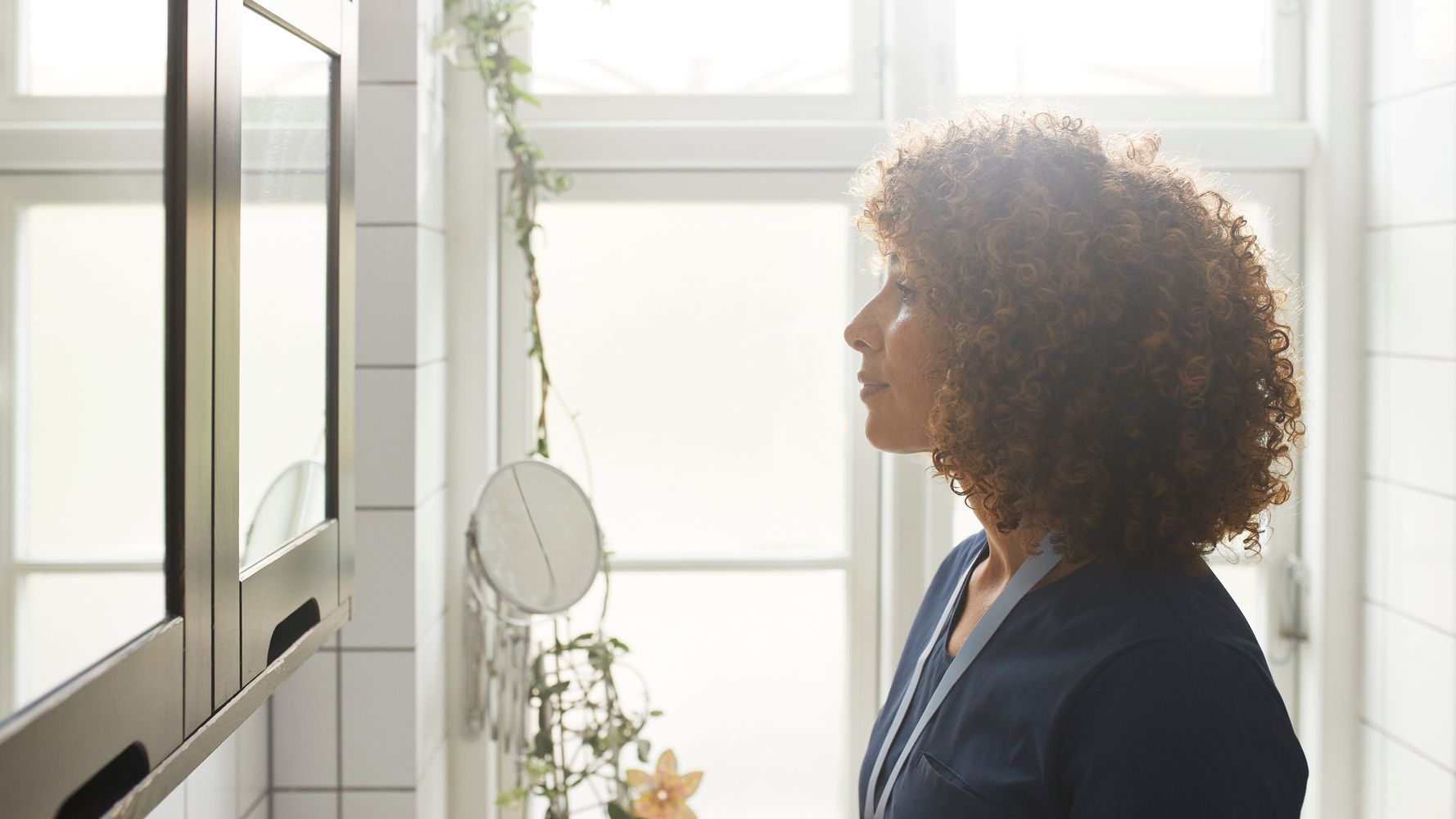[ad_1]
Have you ever been fixated on a part of your body that nobody else seems to notice or that causes you a great level of stress?
If you’ve brought up these concerns to friends or loved ones, they might have said, “It’s not even noticeable,” or, “You’re being dramatic.” While the intention is to make you feel better, it can sometimes have the opposite effect and make you feel worse.
Therapists like Maggie Osinski know a thing or two about these bodily fixations. “Body dysmorphia is essentially a preoccupation with perceived flaws in one’s physical appearance that causes a significant amount of emotional distress,” Osinski, an eating disorder specialist in Brooklyn, New York, told HuffPost. “Like most mental health disorders, the cause of body dysmorphia is due to a variety of factors, including environmental, psychological and neurobiological factors.”
Body dysmorphia is the general term used by many who have experienced these feelings, but it’s also part of a clinical diagnosis known as body dysmorphic disorder that affects about 1 in 50 people, according to the International OCD Foundation.
“BDD is a mental health diagnosis that is an anxiety disorder characterized by overthinking and a preoccupation over a person’s perceived physical flaw ― one often unnoticed by others ― which leads to compulsive behaviors that can impair a person’s life,” said Gretchen Hudson, a therapist from Massachusetts who specializes in self-esteem and eating disorders.
Below are some tips therapists use when they’re personally experiencing body dysmorphia ― and which they recommend to clients too.
1. They practice ‘opposite action’
Often used in dialectical behavioral therapy, this tip is exactly what it sounds like: Do the opposite action of what your brain is telling you.
“When you notice the urge to isolate and avoid social situations due to intrusive thoughts about body image, do the exact opposite of the urge to do so,” Osinski said. “Folks who experience body dysmorphia often avoid social situations. Challenging the urge to hide from the world is an important exposure when learning to cope with body dysmorphia.”
2. They challenge the thoughts
This is definitely easier said than done. When you’re staring at yourself in the mirror and picking out all of your “flaws,” it can be difficult to see anything beyond that.
“Challenge negative thoughts about self that are associated with body dysmorphia,” Osinski said. “It is important to challenge self-judgments associated with body image, as they often contribute to low self-esteem, shame, and feeling unlovable.”
When it comes to coping with body dysmorphia specific to weight and size, Hudson suggested taking the time to challenge thoughts stemming from diet culture.
“A lot of times my clients and I put energy into getting out of diet culture, realizing that our society has placed so much value on a particular body,” Hudson said. “My clients often thrive when we change the narrative ― the story we tell ourselves.”

Klaus Vedfelt via Getty Images
3. They don’t try to heal or fix every issue at once
Unfortunately, healing from body dysmorphia doesn’t happen overnight. Similar to most things, slow and steady wins the race. Kelly McKenna, an anxiety therapist treating clients in New York, New Jersey and Florida, said starting small is one of the best ways to work through body dysmorphia.
“Slowly stop doing the things that are adding to your anxiety and body dysmorphia,” McKenna said.
Pick one habit to change, like critiquing yourself in the mirror or avoiding certain clothing ― and focus on that. “Try to ride the anxiety out and see what happens,” McKenna said.
4. They set boundaries
McKenna also suggested setting boundaries with friends and loved ones around topics of discussion that can be triggering.
For example, McKenna said, tell them: “I’m not interested in talking about diets,” “Please don’t comment on my body,” or “I’m actually working on healing my relationship with my body. It’d mean a lot to me if you didn’t comment on my body ― whether it’s good or bad.”

Tony Anderson via Getty Images
5. They use a mantra that helps them speak more kindly to themselves
Self-compassion is an important aspect of everyday life, but it’s even more important to practice it when you’re struggling with body dysmorphia.
“This can look like taking five deep breaths … or repeating a meaningful mantra can help snap one’s automatic rigid thought patterns to a kinder self-talk, such as, ‘I am here for myself with love and acceptance,’” said Dr. Jasdeep Sandhu, a psychiatrist at LifeStance Health. “The mind will listen to whatever story we tell it, so though it may feel silly, we have to program in new dialogue with repetition. It is one way the brain learns.”
6. They talk to a therapist
Even therapists have therapists. While in-the-moment tools can be helpful when you’re experiencing body dysmorphia, seeking out a therapist is the best line of treatment.
“I would recommend meeting with a therapist who specializes in treating eating disorders and/or OCD,” Osinski said. “While not everyone who experiences body dysmorphia has an eating disorder, these specialists are trained to work with individuals who struggle with body image issues. Therapists who specialize in treating obsessive-compulsive disorder are also a great option, as they will be able to help you to cope with intrusive thoughts and enhance distress tolerance skills via exposures.”
If you’re struggling with an eating disorder, call the National Eating Disorder Association hotline at 1-800-931-2237.
[ad_2]
Source


